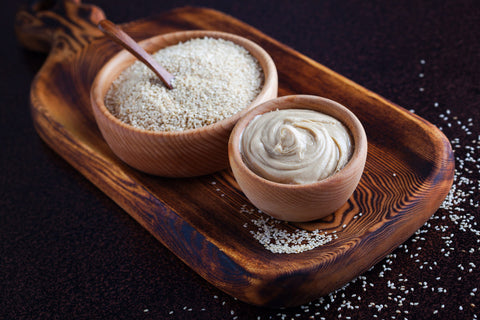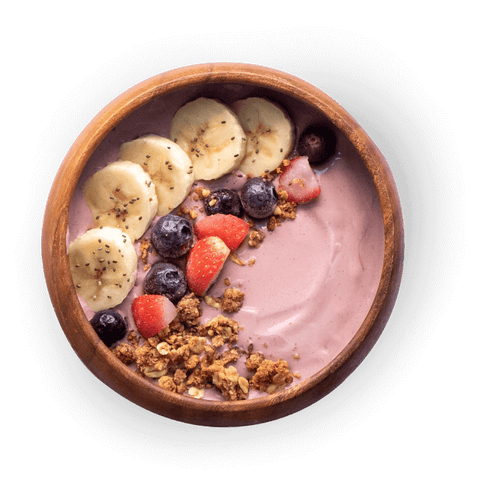Already appreciated in many cultures, tahini is quickly becoming a staple for those interested in balanced eating or who simply want to diversify their daily meals. If you’ve ever wondered what this beige paste is, where to use it, or why so many home cooks are talking about it, you’ve come to the right place.
What is tahini?
Think of tahini as a hidden treasure inside tiny sesame seeds. It’s a smooth paste made from carefully ground sesame seeds, sometimes with a pinch of salt for balance. Its texture is similar to peanut butter, but it has its own personality: velvety, dense, and with a subtle nutty flavor.
Its color can be a pleasant surprise: from a light and delicate cream shade, if made from white sesame, to warm brown hues if whole or roasted seeds are used. Each version tells its own story on the plate.
On store shelves you’ll find tahini from white sesame – smooth, light, and mild – or tahini from whole seeds, with a deeper flavor and a slightly bitter touch. The making process is simple but careful: the seeds are selected, lightly roasted or left raw, then ground into a creamy paste. The best nut butters are 100% natural, with no additives, keeping the authentic taste and unmistakable sesame aroma.
Origins and traditional uses
Tahini originated in the Middle East and North Africa, where it has long held a central role. In many traditional recipes, tahini is the main ingredient in hummus (chickpea purée), but it also appears in sauces for kebab, baba ganoush, or sweets like halva.
Today, sesame paste is also widely used in modern kitchens – in salads, dressings, creamy soups, or quick desserts. Use tahini to add instant creaminess or to round out the flavor of savory dishes, but also sweet ones, like almond yogurt with honey.
Nutritional value of tahini

Photo source: Shutterstock
Beyond its taste, tahini offers valuable nutrients. Here’s what a reasonable portion (about one tablespoon) contains:
-
plant-based protein – especially useful in vegan diets
-
dietary fiber, which supports digestion
-
healthy fats, including monounsaturated fatty acids and omega-6
-
calcium, magnesium, phosphorus, iron, zinc, and copper
-
B vitamins, plus antioxidant-rich vitamin E
An important note: tahini is relatively high in calories (around 90 per tablespoon), which means moderation is key. If you have an active lifestyle, it can provide quick energy or complete your post-workout snack.
Health benefits of consuming tahini
Adding tahini to your diet can bring several benefits, especially when included in balanced meals. Its healthy fats help maintain a good cholesterol profile. The fiber supports intestinal transit and helps you feel full after eating.
If you want to diversify your sources of calcium, tahini made from hulled seeds is particularly useful for people avoiding dairy. Magnesium helps lower blood pressure. Meanwhile, sesame antioxidants (sesamin and sesamolin) protect cells from stress.
For those with sesame allergies, consumption should be avoided. Small children and people on calorie-restricted diets should consult a doctor or nutritionist before introducing tahini regularly.
How to use tahini in cooking?

Photo source: Shutterstock
Sesame paste isn’t limited to hummus, even though this classic dish made tahini famous worldwide. You can also use an organic hummus mix if you want a quick version, perfect for a snack or appetizer platter.
If you’d like to experiment more, here are some simple ways to integrate tahini:
-
Mix tahini with lemon juice, water, salt, and a little garlic; use it as a sauce for falafel or roasted vegetables.
-
Spread on whole-grain bread with honey or jam for a quick, different breakfast.
-
Make a salad dressing by combining tahini, lemon juice, water, a pinch of salt, and spices (such as cumin or ground coriander).
-
In smoothies, tahini adds thickness and protein; try it with banana and spinach.
-
Turn tahini into a sweet cream by mixing it with honey, a bit of cocoa, and a touch of vanilla.
If you notice oil on top of the tahini, stir it back into the paste until smooth – never discard it, as it comes from the sesame seeds themselves.
How to choose and store quality tahini
For authentic taste and full benefits, look for products that contain only sesame seeds, with no additives.
Choose varieties with organic certification, such as those in the basic organic ingredient range. Check the consistency; tahini should be smooth, without coarse bits. After opening, keep the jar in the fridge to maintain freshness. Don’t store it in direct light or heat, as the flavor may deteriorate.
Serving and pairing ideas
Tahini complements traditional oriental dishes but also pairs well with modern snacks. Spread it on thin slices of roasted pumpkin or drizzle it over a raw vegetable salad. For dessert, combine tahini with sliced fruit or use it as a topping on oatmeal.
Try more unusual options too: fold it into cookie dough, stir some into lentil soup for extra creaminess, or mix it into a cheese spread for sandwiches (if you’re not following a vegan/fasting diet).
Serve tahini alongside mature cheeses and dry wines. Its nutty taste pairs well with white wines like Chardonnay or Sauvignon Blanc.
Cooking tips with tahini
-
Use clean, dry spoons to avoid contamination and extend shelf life.
-
If cooking with tahini for the first time, start with small amounts; the flavor is strong.
-
Don’t add it directly to very hot dishes – it may split. Instead, mix it separately with a little cold water and gradually add it to the warm preparation.
Explore, adapt recipes, and customize the taste just the way you like it. Tahini promises new culinary experiences, no matter your cooking style.











